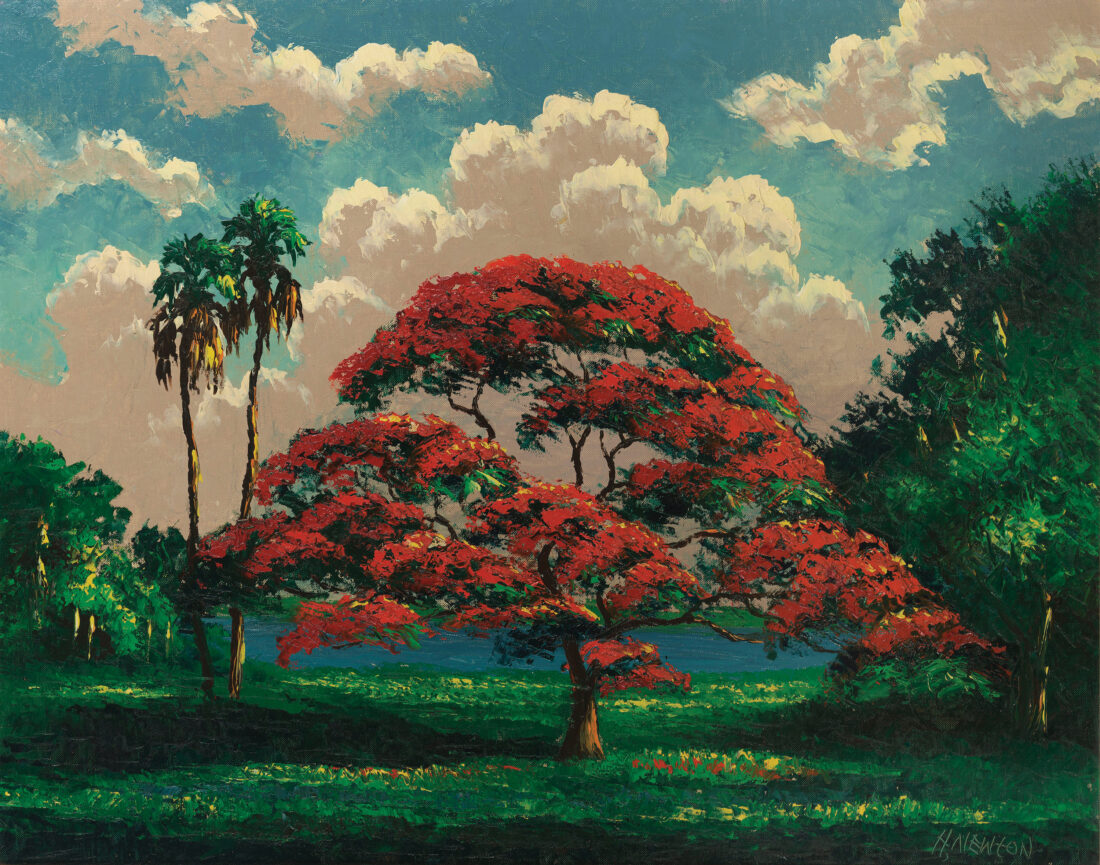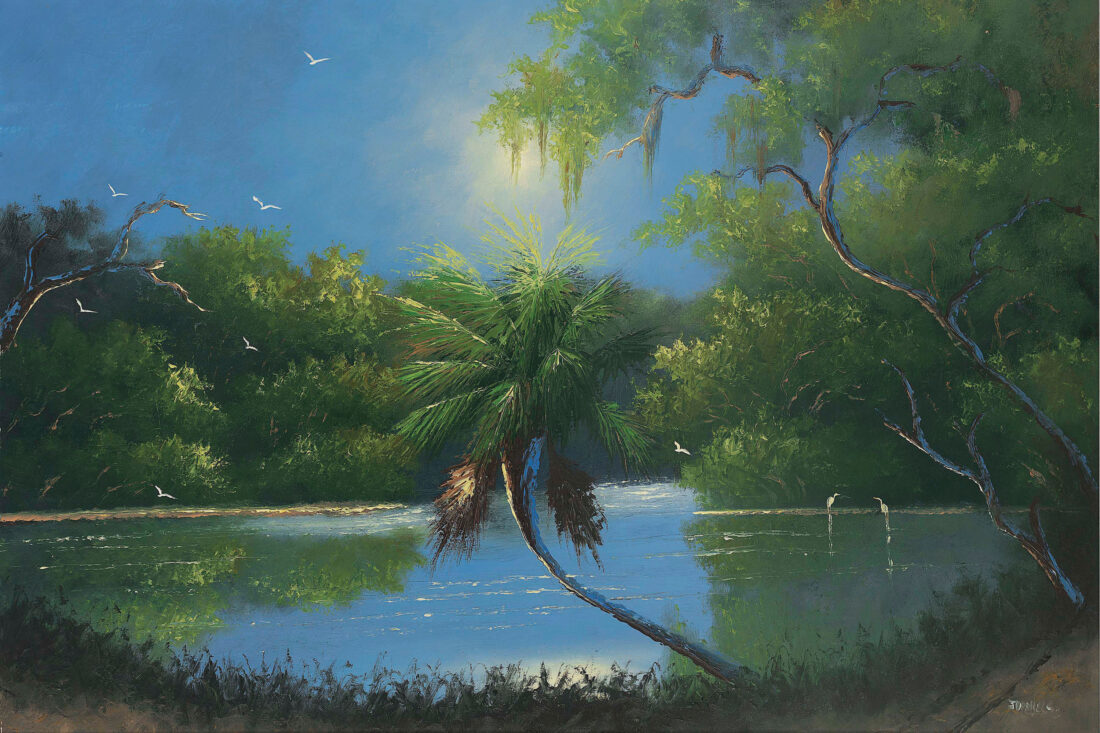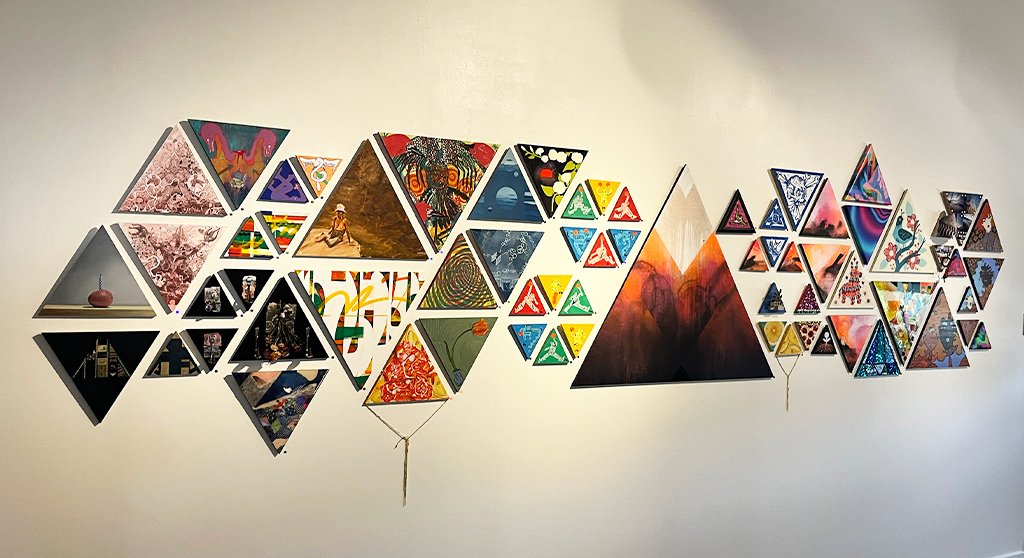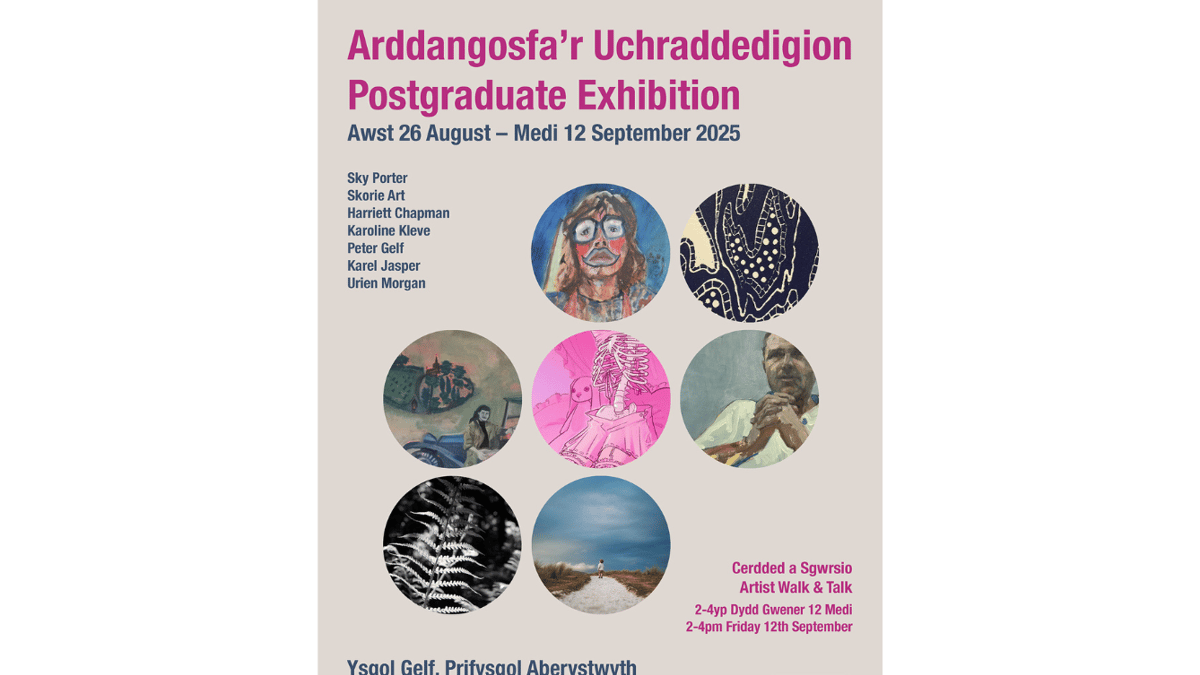My mother once purchased two paintings from an artist peddling her work in the hair salon. The way the woman glided around the women waiting to get their hair fried, dyed, and laid to the side fascinated me. She sold Mom the folk-style pieces and disappeared from our lives.
My mother was newly divorced with two children, and probably couldn’t afford the paintings. Perhaps the woman was just a good salesperson. Or maybe my mother appreciated the art of the ask, something she never quite managed to execute herself. An artist with some classical training, Mom painted pastoral scenes on repurposed coffee cans. Painfully shy, she would often cut the price or give her work away so she could stop talking. At times I stood in as her salesperson, an elementary schooler dealing with hagglers wherever she set up shop—antique stores, craft fairs, the flea market. But she never found a steady home for her work. Eventually, she stopped painting altogether.
The hair-salon works were evocative to me, even if I didn’t know what that word meant yet. In the first, an old lady, cane in hand, checks her mailbox, the door open, its inside dark. An old-timey water pump, an outhouse, and a big tree, its leaves shimmering green, set the rest of the scene. The lavender and pearl-gray swirls of the sky seemed to reflect my mercurial mood as an often-tempestuous preteen. The second resonated too. In it, two Black figures in tan clothing walk toward a two-story home. One carries a basket, the other a long pole, as if they are returning from a fishing hole. I recognized myself in these people—enough to enter the scenes and make up my own stories. In the renderings, everything was tranquil, nothing was wrong, a far cry from my childhood. I could see the brushstrokes, the way the artist manipulated her brush just so, with grand sweeps of color across the backgrounds and tenderly articulated dabs of color indicating blooms. The artist’s signature was barely legible. Something like “Debbie Smith.”
Mom never displayed the paintings, instead tucking them into the back of a closet, but that day in the salon leaped to my mind during a recent trip through Florida. Fort Pierce, on the Indian River, had organized a trail of stops celebrating the Highwaymen, a loose-knit consortium of Black artists who made a living selling original oil paintings out of the trunks of their cars for several decades starting in the fifties. I began at the A. E. Backus Museum & Gallery, named for a well-established white landscape painter who influenced the Highwaymen. One of the group’s core members, Alfred Hair, took lessons in the mid-fifties at Backus’s studio.

Harold Newton (1934–1994). Poinciana, c. 1960. Oil on Upson board, 24 x 28 in.
Racism has created barriers for Black artists, especially for Hair and his contemporaries. Backus, meanwhile, as an experienced white artist, sold his paintings for hundreds of dollars each at the time, with a waiting list for his work. Hair resolved to paint his Florida landscapes more quickly than Backus and sell them at a cheaper price. This need for speed meant Hair ended up adapting and creating his own techniques, including “fast grass,” his method of rendering Florida saw grass with a palette knife. Instead of canvas, he and the other Highwaymen employed Upson board, made from compressed recycled wood fibers and used to build ceilings and walls; they turned other inexpensive building materials into frames. Hair began hawking his paintings along highways such as US 1 and A1A, marketing his sunlit clouds, sherbet sunsets, and windswept palms as affordable slices of paradise.
Other Black landscape artists caught on, and the group grew to include twenty-six mostly men who gathered to paint and socialize, sharing techniques and stories of the mom-and-pop motels, shell shops, and seafood restaurants where they’d stop to vend. Together, they crafted a life from their art, one that kept at bay the hostile orange groves and the other menial and manual-labor jobs to which Blacks were often limited. Some members produced up to twenty paintings a day, and some estimates credit the collective with creating around 200,000 paintings in their heyday.
The sole woman, Mary Ann Carroll, later dubbed the First Lady of the Highwaymen, would load her paintings into her Buick Electra and traverse the state, down to Jupiter, West Palm Beach, even Miami, before turning around to make it home to Fort Pierce by the end of the school day. For the mother of seven—divorced for much of her career—selling a painting bought a week’s worth of groceries and a tank of gas.
At a time when many Black artists had left America for Europe in hopes of facing fewer prejudices, the Highwaymen were painting a pathway into another world, one that crossed the boundaries and borders of race and class. These excursions could come with a cost. Carroll carried a knife with her, and later a gun. “I could defend myself,” she told the author Gary Monroe for his 2014 book about her. “I could throw a guy. I could box, and I could run real fast.”

Johnny Daniels (1954–2009). Evening Scene, not dated. Oil on Upson board, 24 x 36 in.
By the eighties, the group’s popularity had waned. Wider recognition would arrive late, if at all. Harold Newton, one of the earliest Highwaymen, died in 1994, right before articles about the Floridians published in such places as the New York Times ushered in a renewed interest, making pieces they sold for $25 and $35 worth tens of thousands. In their prime, these artists couldn’t get gallery representation because of their race; now their work hangs in museums and collections the world over.
I ended my Highwaymen Heritage Trail hop at Fort Pierce’s Intermodal Transit Station, its side filled with a tiled mosaic of a royal poinciana tree. Most of the Highwaymen painted the flamboyant Delonix regia. When it flowers, its crimson blooms make it look as though it’s on fire, hence its nicknames, the “flame of the forest” and the phoenix tree. The names of the original twenty-six Highwaymen frame the mosaic. Only six of them survive.
The next day, I began to see royal poincianas everywhere—in the small towns I breezed through and, toward the end of my trip, on the lip of a lake, where I parked my car and sat on a park bench. The trees bloom once a year for about a month, and I happened to be there at the right time. As many decades as I have wandered Florida, this was the first time I had truly seen this tree. Thanks to the Highwaymen’s paintings, I was looking at the scenery differently. And will continue to. That is the power of art, and the energy of that moment has stayed with me, long after the paintings vanished from my sight.
When I returned from Florida, I asked Mom about the hair-salon paintings, hoping she still had them. They deserve to be out in the world, for the unsung woman who created them to be remembered. A way to honor the legacy of the Highwaymen and Carroll too. Almost thirty years later, Mom pulled them from her closet, intact.
Illustration (1): Landscape: Richard – stock.adobe.com; artist: Pixel-Shot – stock.adobe.com; palm tree: thaporn942 – stock.adobe.com;heron: taviphoto – stock.adobe.com; royal poinciana blossoms: sarayutoat – stock.adobe.com.






